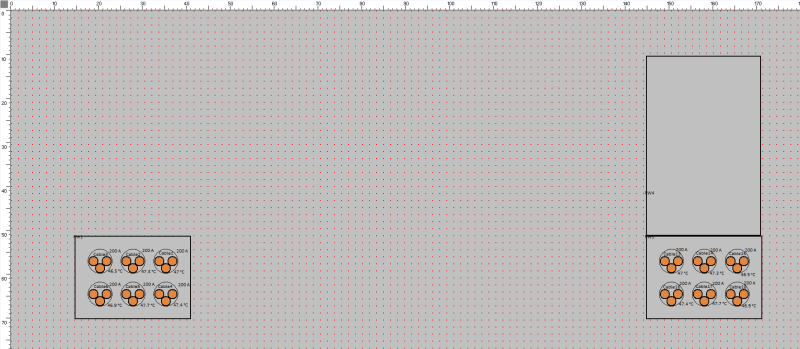I am sorry. I use neither ETAP nor SKM. I use simply excel [Microsoft] and Neher & McGrath publication or IEC 60287-1-1 and 2-1.I prepared- by myself- some programs in Visual Basic for specific problems-duct banks and other underground cable run [for ampacity calculation].
For instance, in your sketch the conductor temperature is 47-48oC. Actually, in my opinion, it is only the temperature rise from ambient -I think 25oC Earth.
If I take the cable as single core copper 500 kcmils conductor 1 kV insulated -with out FTB- I get 202.4 A ampacity [maximum 75oC as per NEC]
According to Neher&McGrath chapter Use of a low-resistivity back fill we may use for Earth resistance formula 44a using instead of ρc the ρf of the back fill material and for the Gb factor to consider the back fill in the duct-bank dimensions. So, I got 60oC conductor temperature-that means instead of 48oC rise only 35oC rise [for 200 A load].


